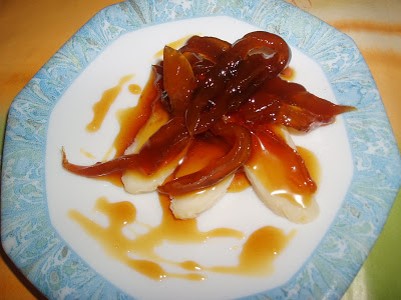Introduction: Cabo Verdean Cuisine
Cabo Verdean cuisine is a blend of African and Portuguese culinary traditions. The archipelago of Cabo Verde, located off the coast of West Africa, has a diverse cuisine that is influenced by the country’s history of colonization, trade, and migration. The cuisine of Cabo Verde is characterized by the use of seafood, beans, rice, and spices.
The Use of Spices in Cabo Verdean Cuisine
Spices are an essential component of Cabo Verdean cuisine. Cabo Verdean dishes are known for their bold and complex flavors, which are achieved using a variety of spices. The use of spices in Cabo Verdean cuisine is influenced by the country’s history of colonization and trade. The Portuguese brought spices from their colonies in India and Southeast Asia to Cabo Verde, which led to the incorporation of these spices into the local cuisine.
The Influence of Portuguese and African Cuisine
Cabo Verdean cuisine is influenced by both Portuguese and African culinary traditions. The Portuguese brought ingredients such as salt cod, pork, and beans to Cabo Verde, which have become staples in the local cuisine. African ingredients such as yams, cassava, and millet are also commonly used in Cabo Verdean dishes. The blending of these culinary traditions has resulted in a unique cuisine that is both familiar and exotic.
Popular Spices in Cabo Verdean Dishes
Some of the most popular spices used in Cabo Verdean cuisine include cumin, garlic, paprika, and bay leaves. Cumin is used to flavor stews and rice dishes, while garlic is used in marinades and sauces. Paprika is commonly used to add flavor and color to dishes, while bay leaves are used to flavor soups and stews. Other spices commonly used in Cabo Verdean cuisine include coriander, ginger, and cinnamon.
Heat Levels in Cabo Verdean Cuisine
Cabo Verdean cuisine is not typically known for being spicy. While some dishes may be moderately spicy, the focus is on flavor rather than heat. The use of spices in Cabo Verdean cuisine is meant to enhance the flavor of dishes rather than overpower them with heat. However, some traditional dishes such as cachupa and xerém may be spicier than others.
Spicy vs. Flavorful: Balancing the Flavors
In Cabo Verdean cuisine, the focus is on balancing flavors rather than creating heat. The use of spices is meant to add depth and complexity to dishes without overwhelming them with heat. The goal is to create a harmonious blend of flavors that complement each other. This approach to cooking has resulted in a cuisine that is both flavorful and well-balanced.
Regional Differences in Cabo Verdean Spices
There are regional differences in the use of spices in Cabo Verdean cuisine. The island of São Vicente, for example, is known for its use of coriander in dishes such as cachupa. The island of Santiago, on the other hand, is known for its use of garlic in dishes such as fish stew. The island of Fogo is known for its use of hot peppers in dishes such as xerém. These regional differences add to the diversity of Cabo Verdean cuisine.
Conclusion: Enjoying the Flavors of Cabo Verdean Cuisine
Cabo Verdean cuisine is a unique blend of African and Portuguese culinary traditions. The use of spices is an essential component of Cabo Verdean cuisine, but the focus is on flavor rather than heat. Cabo Verdean dishes are flavorful, well-balanced, and designed to complement each other. Whether you are a fan of spicy food or not, there is something for everyone to enjoy in Cabo Verdean cuisine.

